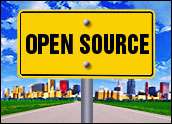New research once again confirms that Linux and open-source acquisition costs are a “fraction” of the cost of comparable proprietary options — but the research adds a new caveat, noting that costs will be driven lower in the coming years.
Today, savings from Linux are often “offset by high integration, maintenance and support costs,” a new survey by Forrester Research indicates. But other experts say new technology standards are emerging that might drive down the total cost of ownership of Linux in the future.
“Ninety-four percent of open source users either run or plan to run on Intel or AMD-based hardware — where a US$5,000 Dell server runs workloads that a $50,000 Unix box ran just three years ago,” the new Forrester report said. “While open-source components are often available for any operating system, Forrester believes that ever-improving Intel price-performance ratio is an important driver of open source adoption.”
Others Agree on Linux Costs
A spokesperson for Linux vendor Amphus told LinuxInsider that the new Intelligent Platform Management Interface (IMPI), also promoted by Intel as well as Dell, HP, NEC and others, will be another factor driving down Linux costs in the future.
“It’s currently for x86 servers, but the good news is that it operates below the OS level, so you can use IPMI to manage and provision Linux, Windows and other servers from one central console, anywhere,” Tom Woolf, spokesperson for Amphus, told LinuxInsider.
“Linux-based products and applications can be very easy to support under the right conditions,” Andy Bergmaier, support manager at Astaro, an Internet security firm that uses Linux, told LinuxInsider. “Astaro’s security solution is built on top of a Linux kernel. However, our developers have written the software so that the Linux kernel is installed transparently with the rest of the application.”
The Linux operating system has “virtually no impact” on deploying and updating software, said Woolf. “Also, I would say that well under 10 percent of our support calls involve any issues with the underlying operating system. Most of these involve protecting against newly discovered security vulnerabilities, which we can handle pretty quickly and easily.”
Systems Management
Another new study by Aberdeen Group — a copy of which was provided to LinuxInsider — confirms these trends. The study said systems management gets simpler in a multivendor world.
The Aberdeen research points out that about half of the total cost of data-center ownership is the labor of the people who operate and administer systems. IT management has been increasingly focused on data-center labor costs, owing to the recession, server-consolidation projects and continuing demands by executive management to drive costs even lower.
Systems management plays a key role in this business process. The IPMI is an open-source, hardware-management interface that uses a standardized message-passing interface to abstract the hardware layers so software can more easily interoperate with system devices.
IPMI, in use since 1998, is one of the most popular tools used to build the systems-management software products that can help many companies lower costs with open source.
Use or Plan To Use
For its study, Forrester queried 140 companies in North America about their open-source plans. Sixty percent of those polled said they either are using or plan to use open-source software, with all of those already using open source saying they have Linux in-house in some capacity.
The Forrester survey confirms that, today, open-source software is moving in from the perimeter of the enterprise, with a full 75 percent of those surveyed using the Apache Web server. More companies are introducing open-source software in mission-critical environments, with 52 percent using MySQL database, 44 percent using the Tomcat Java servlet engine and 21 percent using the JBoss apps server.
The study also said 94 percent of those queried are using Linux on Intel-based hardware. A full 52 percent of those surveyed said they are considering Linux, with Solaris next at 28 percent and HP-UX at 25 percent. Red Hat was dubbed the most important vendor by 33 percent of respondents, followed by IBM with 25 percent. Novell’s SuSE was behind HP, Oracle and Dell at 4 percent.






































